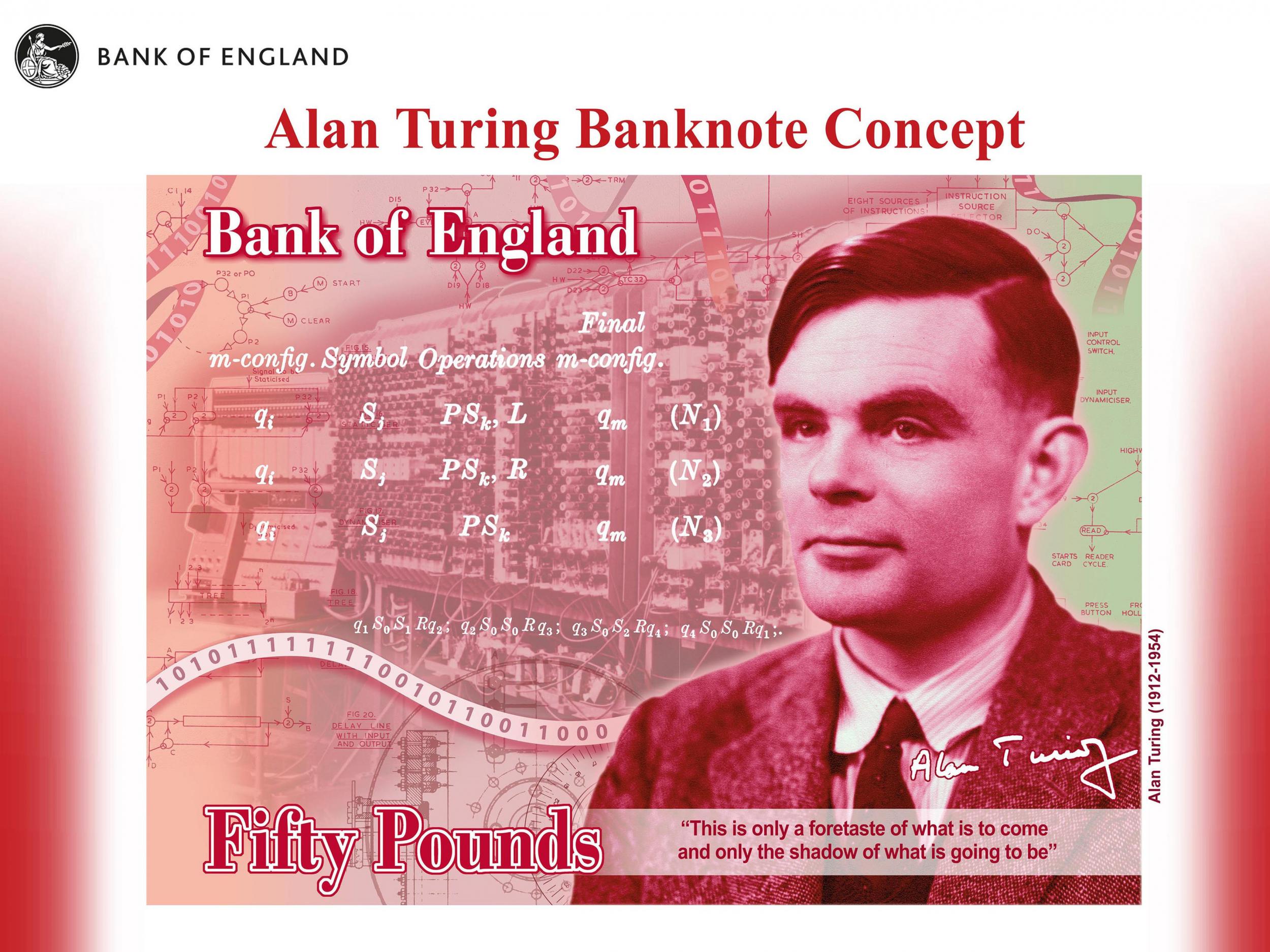Alan Turing: The secret code hidden on the new £50 note
Hidden message is placed in tribute to pioneering codebreaker

It is a fitting tribute for the world's most pre-eminent codebreaker: a mysterious set of 1s and 0s emblazened across the new £50 note.
As the Bank of England announced that Alan Turing would be the face of the new note, the design was largely as expected. It featured a portrait of the pioneering computer scientist and codebreaker, images and symbols from the computers he helped create, and a quote from the man himself: "This is only a foretaste of what is to come, and only the shadow of what is going to be."
But stretching across that note was a banner, in which was written a series of 1s and 0s. Those numbers are clearly binary code – though it was immediately unclear what exactly they were referencing.
The code could be seen clearly in the first image of the note, which was shared by the Bank of England on Twitter. It was revealed as Bank of England governor Mark Carney made the announcement at the Science and Industry Museum in Manchester.

In a reply to the tweet, one user expressed puzzlement about what the binary message said, given it was so short and did not read "Turing" or "science". In response, the Bank of England's Twitter account confirmed that the code was a reference to Turing's date of birth.
The code reads 23 June 1912.
As well as the code, the note includes a table and formulae from a vital paper that was written in 1936 by Turing. The concept of a machine that could read binary tape like that shown in the note featured in that same paper.
The image of Turing on the banknote comes from a photo taken in 1951, and it also includes his signature from the visitors' book at Bletchley Park in 1947.
Join our commenting forum
Join thought-provoking conversations, follow other Independent readers and see their replies
Comments
Bookmark popover
Removed from bookmarks